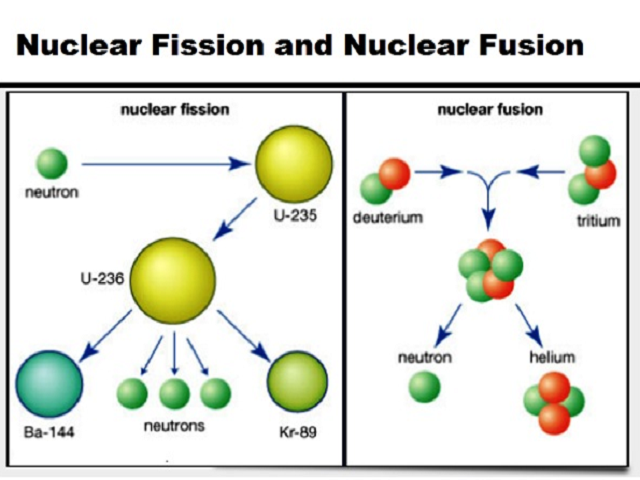

The possibility of radioactive accidents and the long-term storage of nuclear waste often raise concern from the public. However, there are still problems with nuclear fission energy. The question arises - why exactly is nuclear fission energy a good power source for the world? Well, nuclear fission energy has high power output, is comparatively inexpensive, renewable, does not release air pollutants, and has a low carbon footprint. Therefore, new nuclear fission reactions are continuously created, and energy is continuously released in a chain reaction. This starts an entirely new fission reaction releasing energy and three more neutrons. This is because these three neutrons are able to collide with other Uranium-235 atoms in the reactor.
/artwork-of-nuclear-fusion-reaction-160936093-57f174485f9b586c35490999.jpg)
Surprisingly, the three neutrons that are released during the reaction are the most important part of the reaction.

This means that the "binding energy" of the reactants is greater than the "binding energy" of the products, and that energy must be released. Energy is released because the total mass of the products (the atoms created) is less than the mass of the reactants (original atoms). Because this atom is unstable, it almost immediately breaks into two more stable atoms - Barium-141 and Kronium-92, as well as emitting three additional neutrons. When an additional neutron collides with this atom, it creates an even more unstable atom, Uranium-236. This causes the atom to be predisposed to reach a state where the protons and neutrons are much more balanced. An unstable atom has an excess of either protons or neutrons. Uranium-235 is used in most fission reactions because, given that it contains 92 protons and 143 neutrons, it is an unstable atom. In simple terms, nuclear fission is when a heavy unstable nucleus splits upon impact with another particle, releasing energy. About 11% of the world's power is generated from nuclear fission energy. Finding a new energy resource to take coal's place - one that does not contribute carbon emissions to climate change - is also important. As of now, coal remains the world's main source of energy. That means that finding a cheap, safe, and high-power energy source is extremely important to advancing the world around us. © 2021 Federation of American Societies for Experimental Biology.Energy powers our world, homes, businesses, and practically everything we use on a day-to-day basis. This review discusses the molecular mechanisms that control mitochondrial fusion and fission and how the disruption of mitochondrial dynamics manifests into various disease conditions.ĭiseases dynamics fission fusion mitochondria. The imbalance between these two processes is associated with various ailments such as cancer, neurodegenerative and cardiovascular diseases. On the other hand, fission is crucial for mitochondrial division and quality control. Mitochondrial fusion allows the transfer of gene products between mitochondria for optimal functioning, especially under metabolic and environmental stress. Thus, the maintenance of mitochondrial integrity and homeostasis is extremely critical, which is achieved through continual fusion and fission. Besides, they play an active role in calcium and damage-associated molecular patterns signaling, amino acid, and lipid metabolism, and apoptosis. Mitochondria are highly dynamic, maternally inherited cytoplasmic organelles, which fulfill cellular energy demand through the oxidative phosphorylation system.


 0 kommentar(er)
0 kommentar(er)
